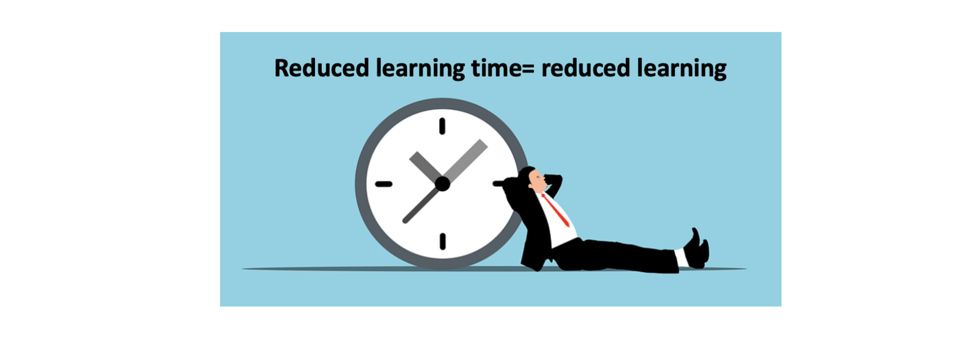Time, learning and cognitive capacity

Dr David Isaacson, PhD
RTO Compliance Specialist, learning/software solutions and transformations.
PhD, Dip. Qual. Audit., Cert 4 TAE, Accredited 6 Thinking
RTO Compliance Specialist, learning/software solutions and transformations.
PhD, Dip. Qual. Audit., Cert 4 TAE, Accredited 6 Thinking
Reduced learning time= reduced learning: How do we enable learners to acquire deep knowledge in a time-efficient way?
The knowledge explosion in the 21st Century has raised some important questions about the way that learning experiences are designed. Not only is knowledge more freely available than it has ever been before, but anyone with an internet connection and device can access some of the best experts in the world on just about any topic.
So why do we need teachers and learning organisations? Surely all we need to do is log in and learn - and 'hey presto!' we'll also be an expert. Unfortunately it is not that simple, as evidenced by completion rates of MOOCs usually being described as 'abysmal.' A key problem is that while the volume of knowledge in the world has multiplied, human learning capability has remained the same in terms of cognitive architecture.
In 1956, George Miller wrote an article that continues to exert a profound impact on learning and teaching and provides a perspective for dealing with this problem. The article is called "The magical number seven, plus or minus two: Some limits on our capacity for processing information." The word 'limits' in the title gives away the punchline of the article and the key principle that Miller contributed to education.
Human beings have a limited capacity for processing new information in working memory. 3-4 chunks of new information is a comfortable load, but the comfort decreases as cognitive load increases. As soon as we try to squeeze in more information than we are able to process properly into long-term memory, we enter the 'decay zone' and forgetting soon kicks in, stress increases, morale decreases and dropping out of the learning environment becomes a greater likelihood.
Miller highlighted the fact that time is a critical factor in learning. The principle goes like this: 'reduced learning time = reduced learning'.
Stated differently, 'if your objective is to impart knowledge at a level where it becomes useful and useable, provide learners with enough time to attain mastery and deep learning.'
I've previously written about the FILM (Frntlne Interactive Learning Methodology) methodology that I developed in collaboration with Frntlne Technologies. This methodology was built on Miller's learning design principle - a theoretical framework that takes the limits of human information processing into account. Mass learning, or information-dumping is avoided. The reverse occurs, with knowledge carefully divided into bite-size chunks and spaced over enough time to allow learners to integrate it deeply into their understanding. Frequent, varied repetition gives learners the opportunity to respond to questions in a way that avoids rote recitation of information.
While this approach is very familiar to educators (it's been around for 65 years), it often gets forgotten through putting the pressure on learning time. Effectively, the question often driving education is, "How much learning can we cover in a limited time?" whereas the learner-centric question based on a more realistic view of cognitive limitations should be, "In the light of limited time available, how can we reduce the learning load so deep learning can occur?" In the first scenario, sooner or later (usually sooner) learners are left behind due to cognitive overload.
As learning designers, Miller's article still stands as a reminder to keep the load imposed on learners within their processing capacity. This may be done by breaking learning content into manageable chunks and providing enough time for learning to become embedded in long-term memory through tried and tested strategies. So in the words of the cliché - with learning, less is more.
.png?width=300&height=105&name=Asset%201FRNTLNE%20(2).png)